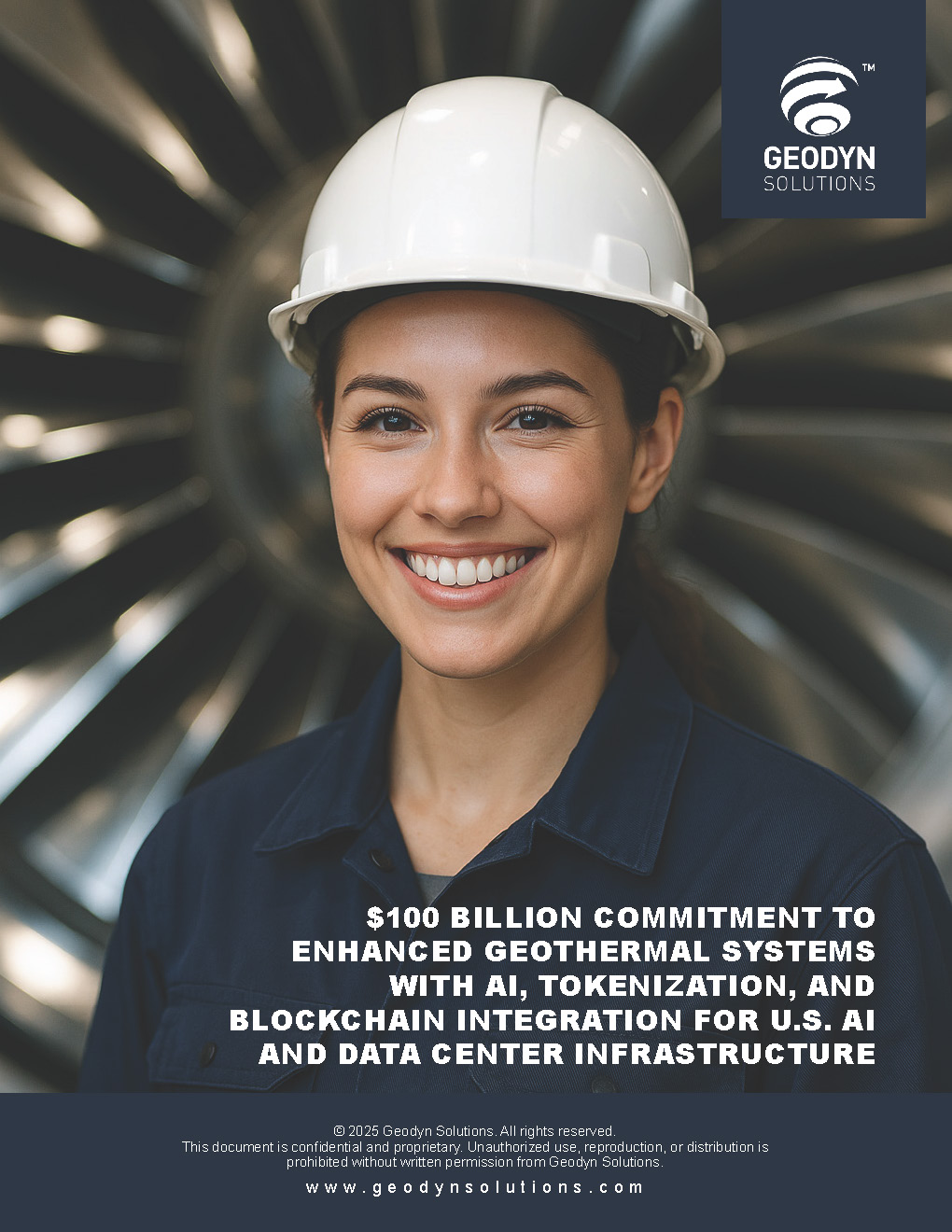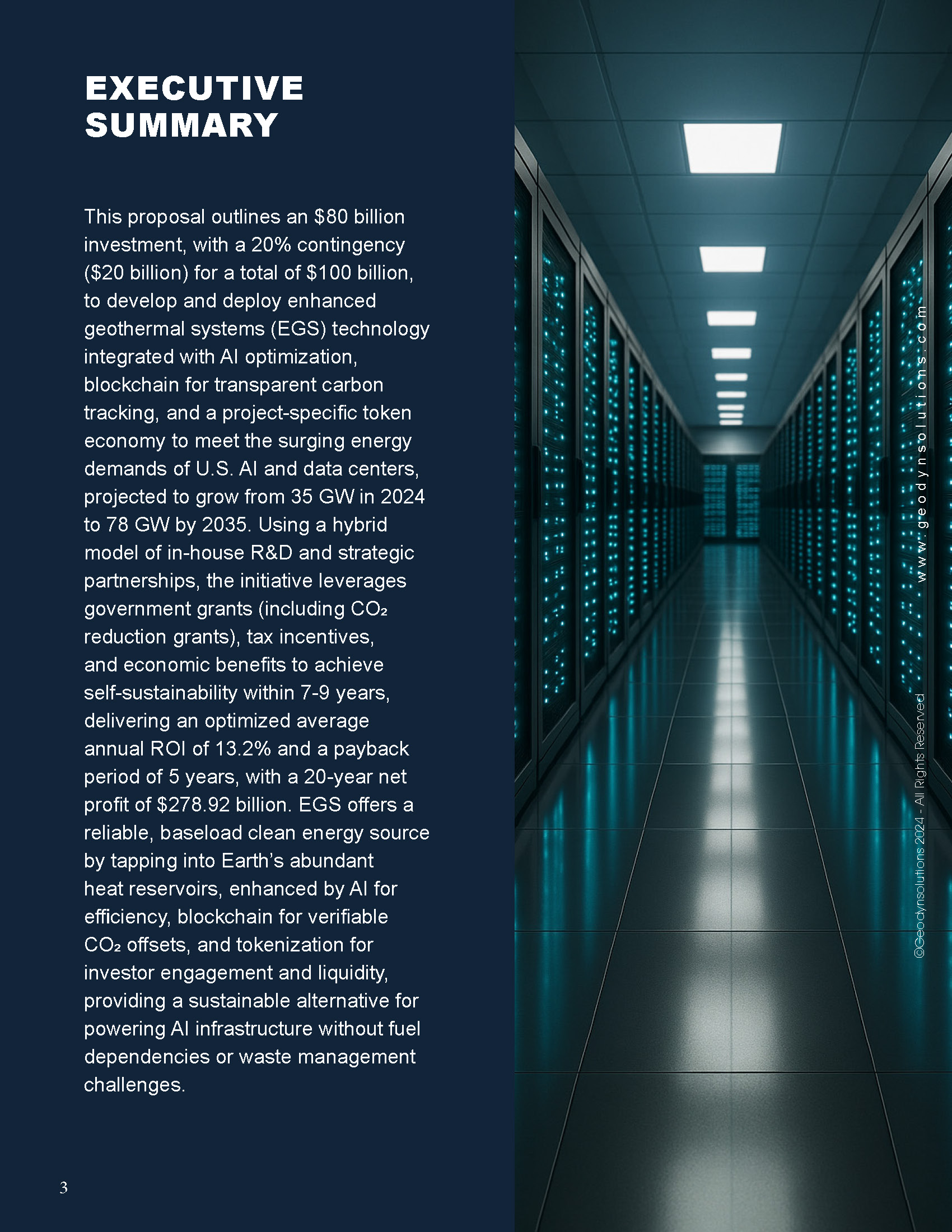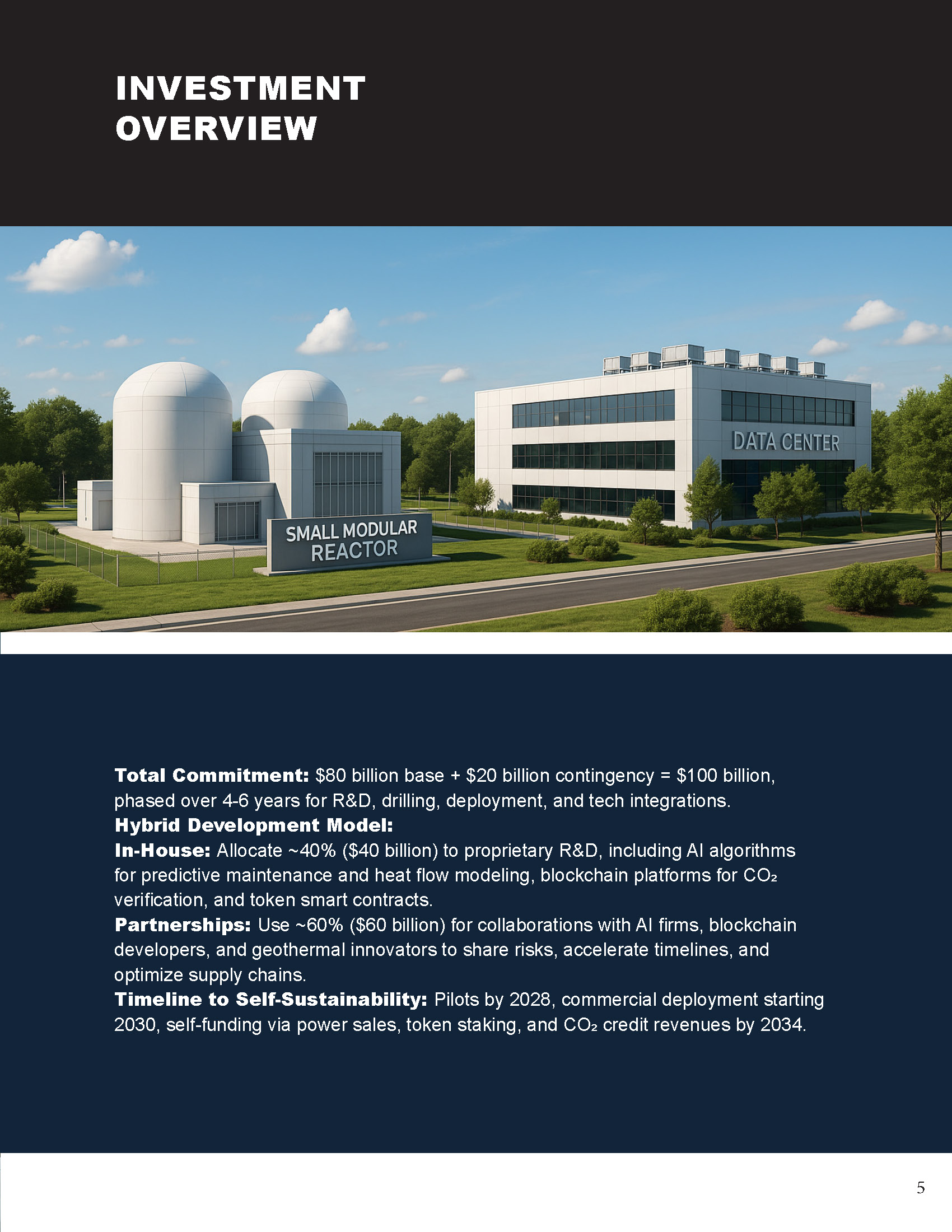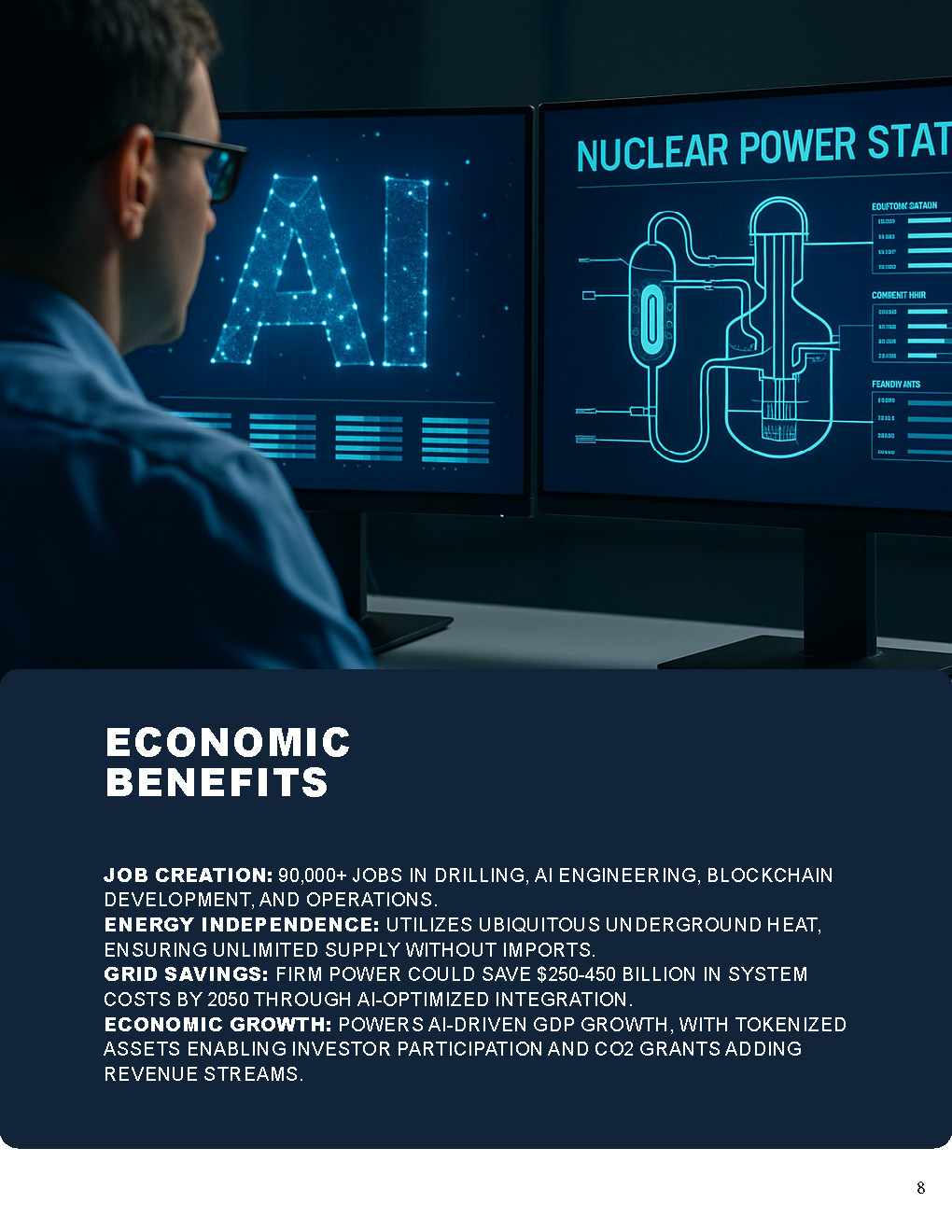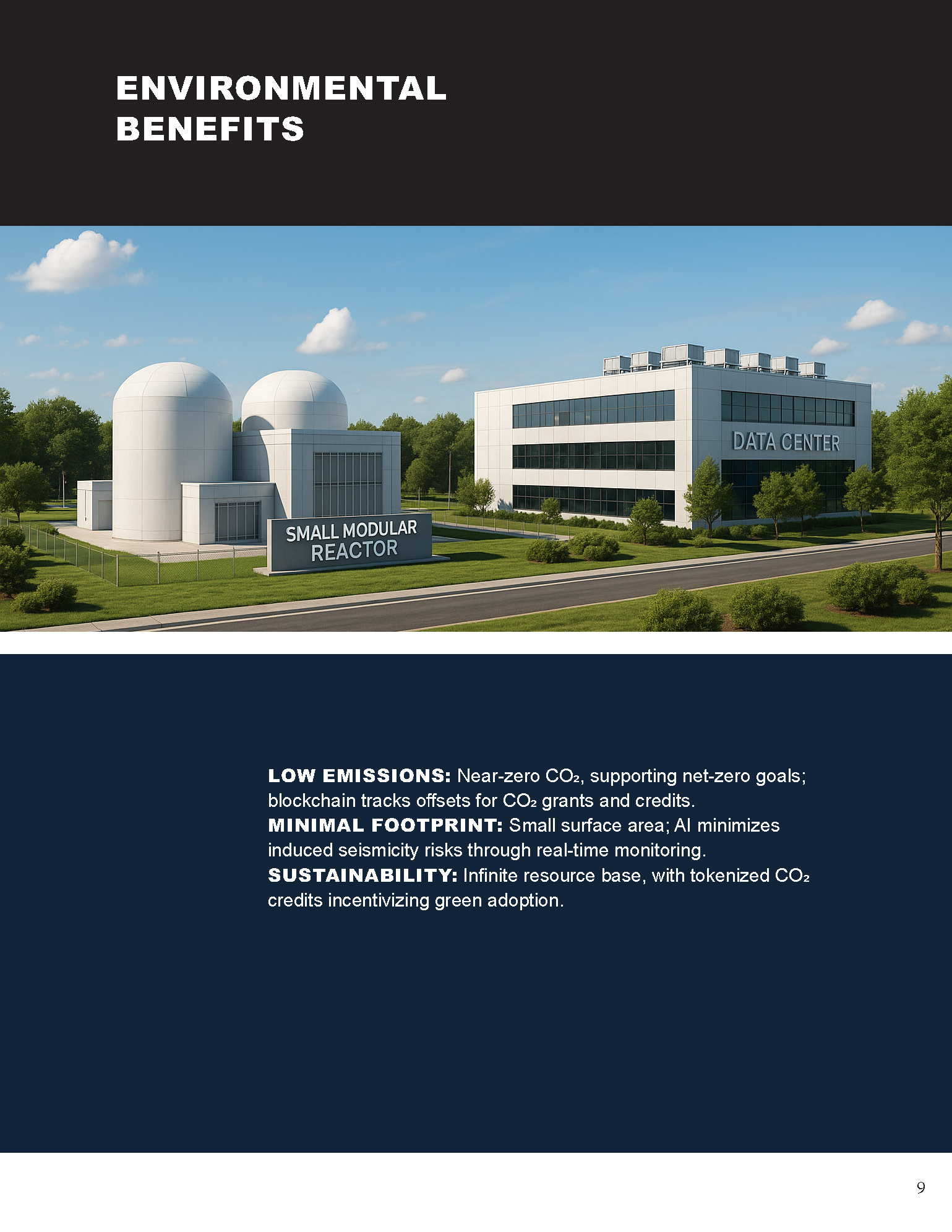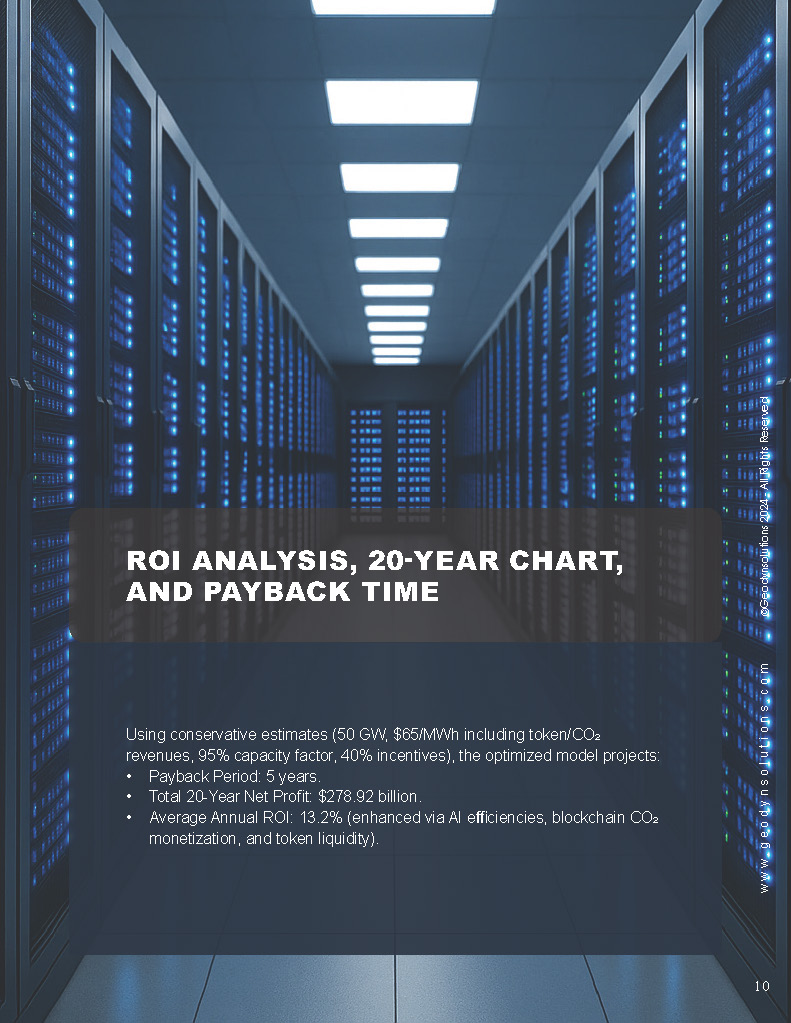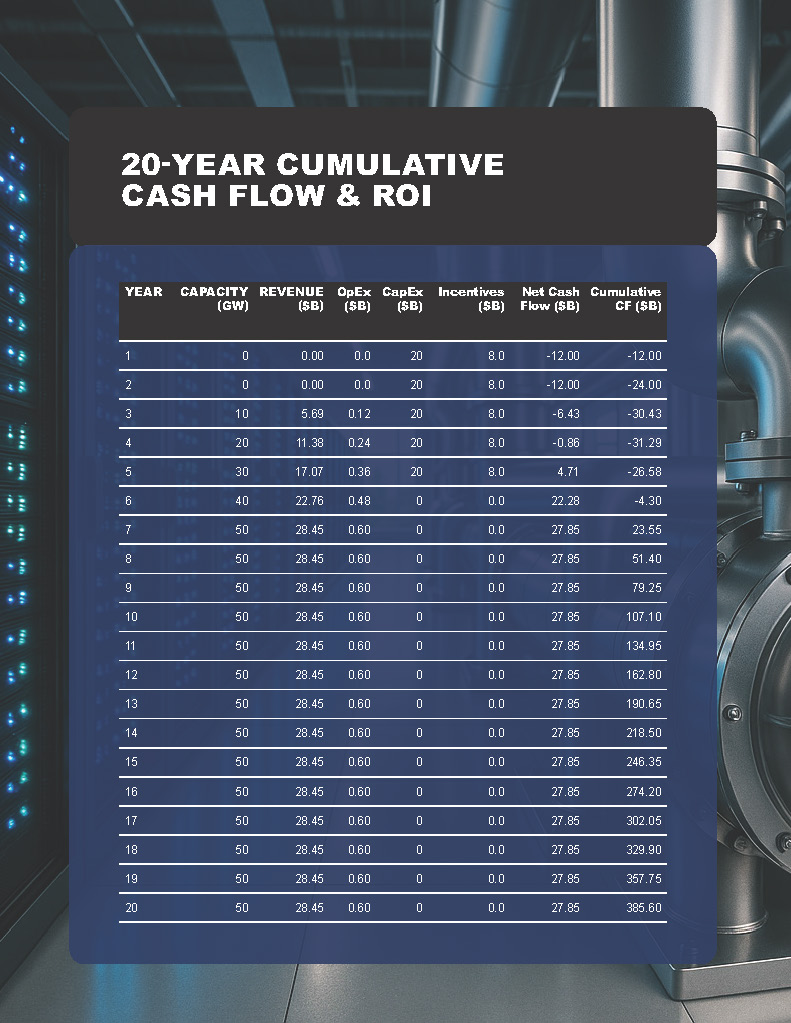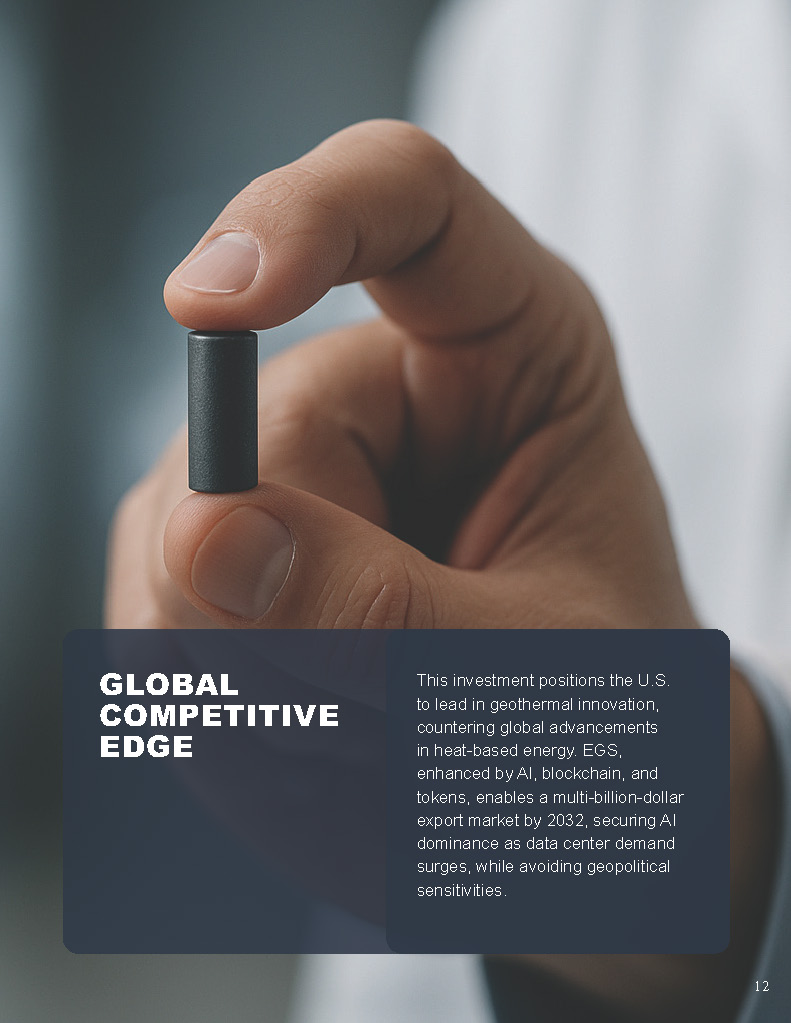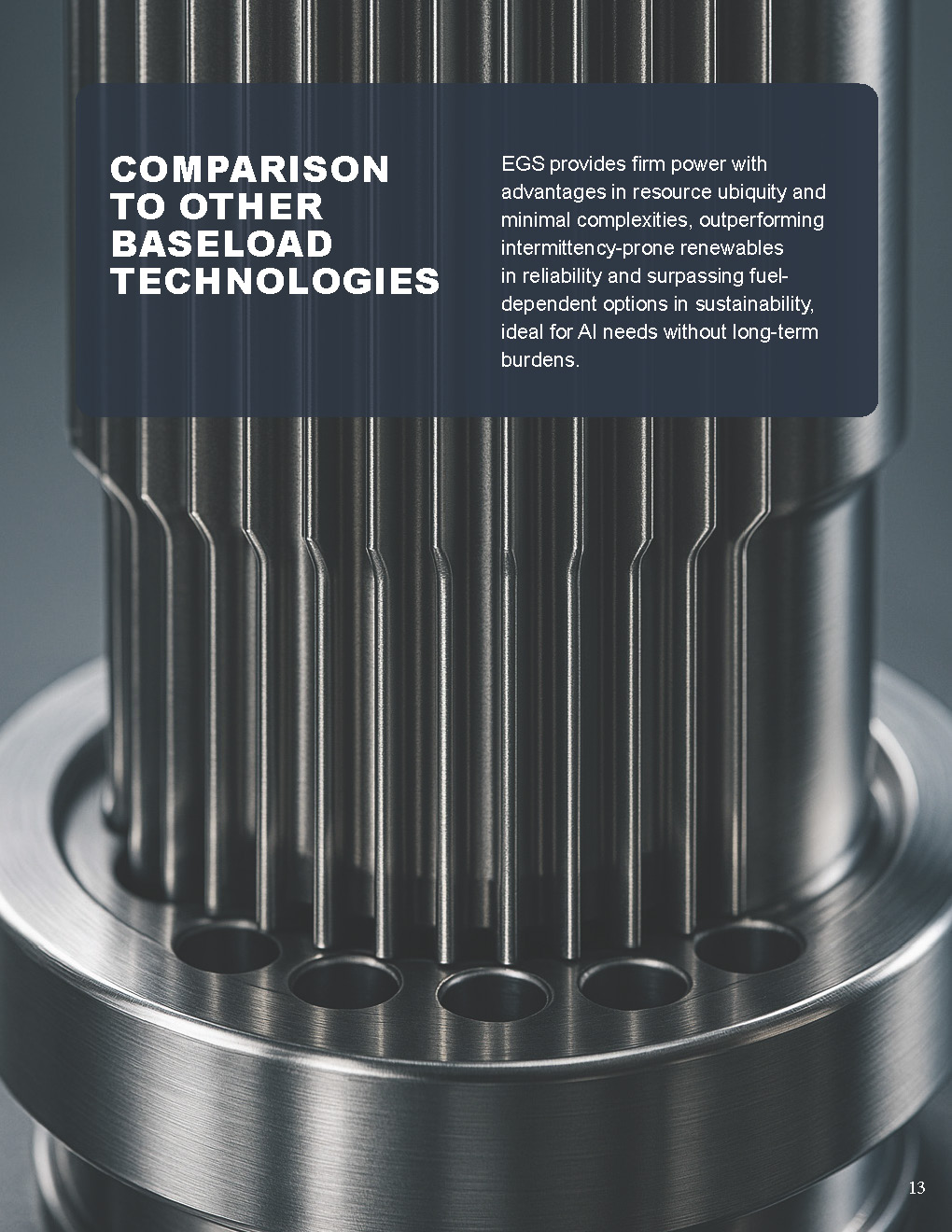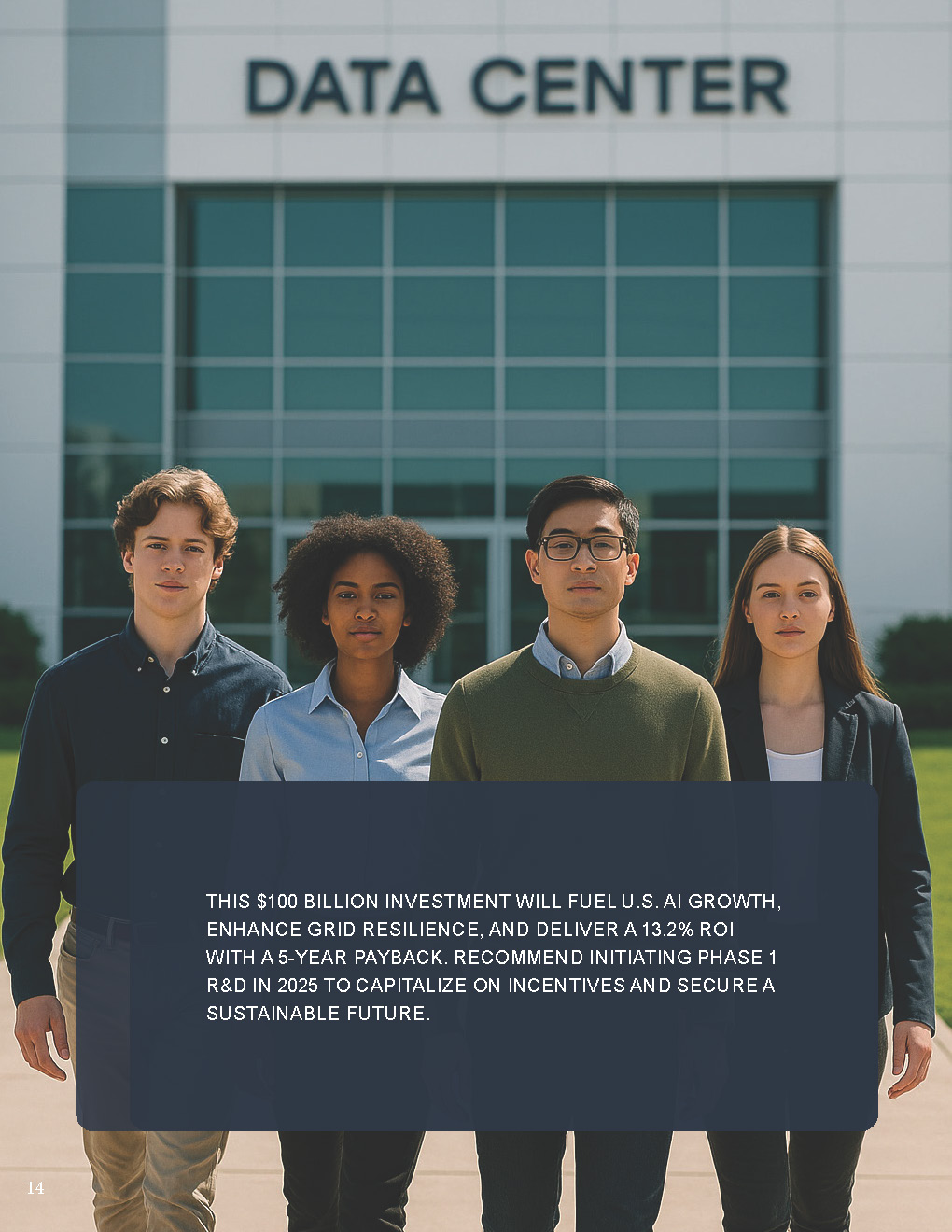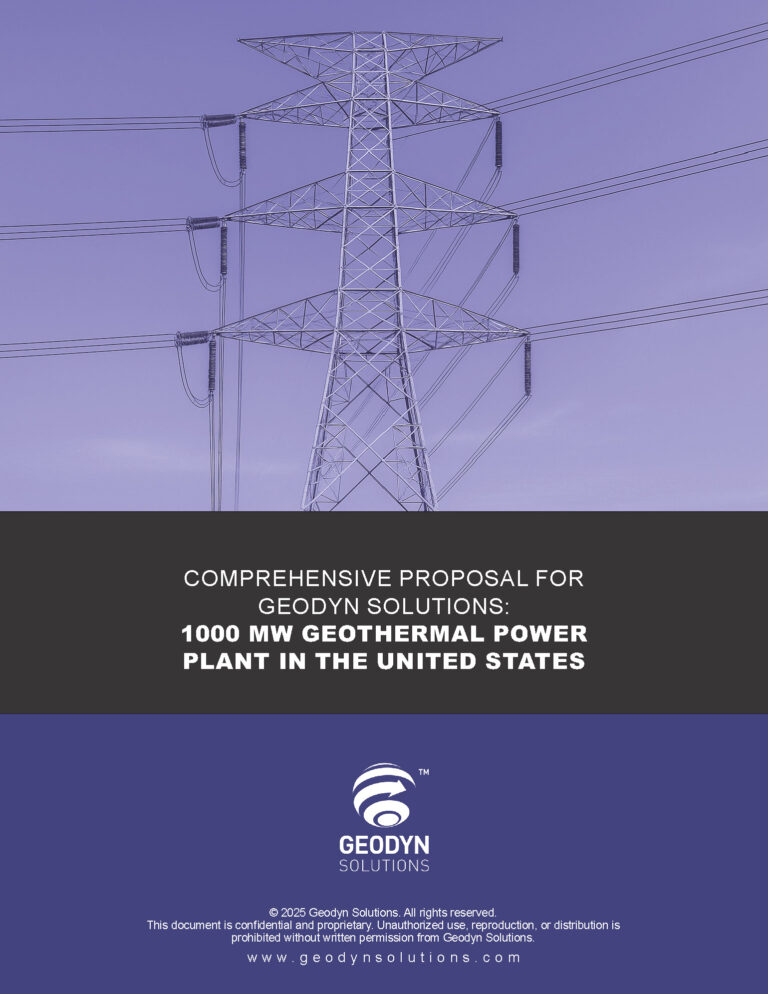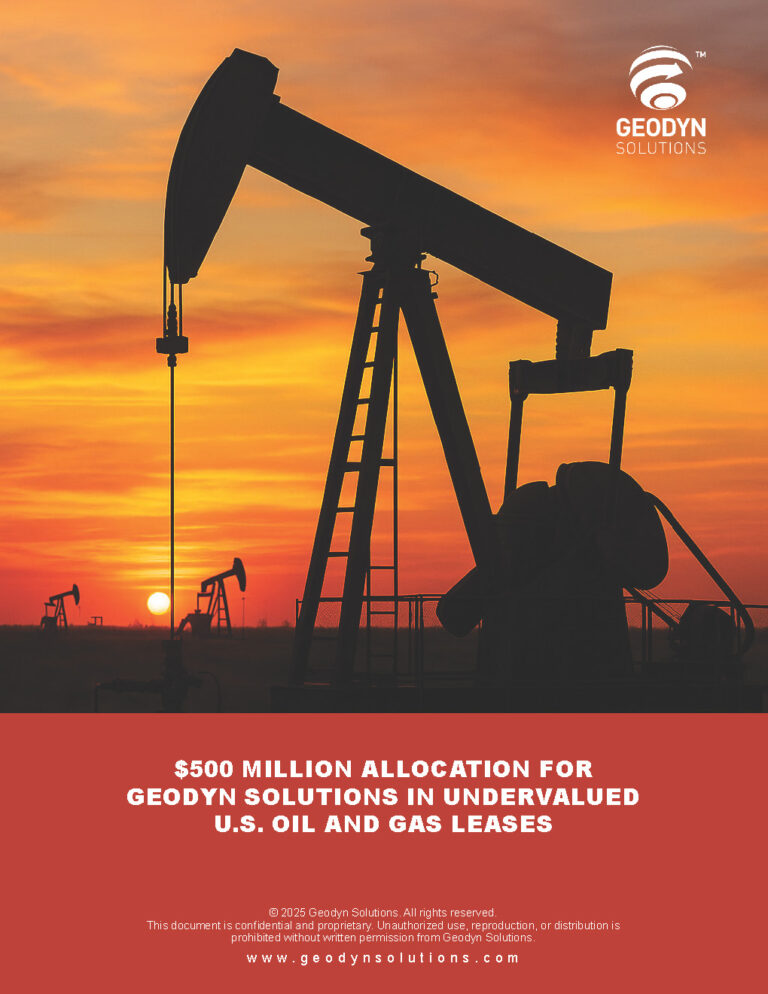Investment Proposal: $100 Billion Commitment to Enhanced Geothermal Systems with AI, Tokenization, and Blockchain Integration for U.S. AI and Data Center Infrastructure
Executive Summary
This proposal outlines an $80 billion investment, with a 20% contingency ($20 billion) for a total of $100 billion, to develop and deploy enhanced geothermal systems (EGS) technology integrated with AI optimization, blockchain for transparent carbon tracking, and a project-specific token economy to meet the surging energy demands of U.S. AI and data centers, projected to grow from 35 GW in 2024 to 78 GW by 2035. Using a hybrid model of in-house R&D and strategic partnerships, the initiative leverages government grants (including CO2 reduction grants), tax incentives, and economic benefits to achieve self-sustainability within 7-9 years, delivering an optimized average annual ROI of 13.2% and a payback period of 5 years, with a 20-year net profit of $278.92 billion. EGS offers a reliable, baseload clean energy source by tapping into Earth’s abundant heat reservoirs, enhanced by AI for efficiency, blockchain for verifiable CO2 offsets, and tokenization for investor engagement and liquidity, providing a sustainable alternative for powering AI infrastructure without fuel dependencies or waste management challenges.
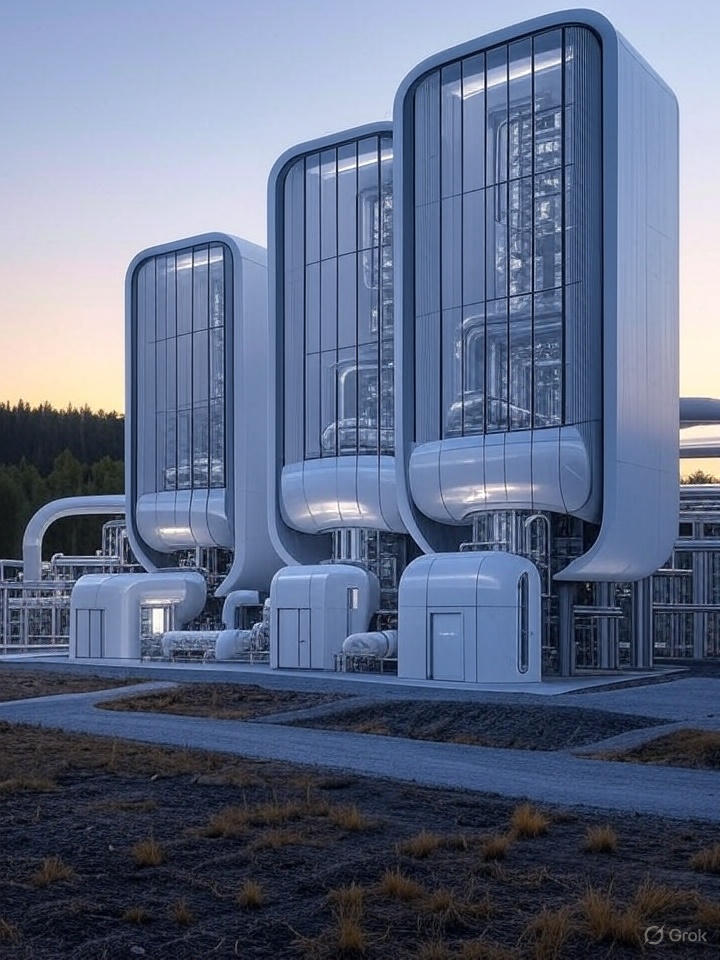 Introduction: The Need for EGS with AI, Token, and Blockchain Enhancements
Introduction: The Need for EGS with AI, Token, and Blockchain Enhancements
The U.S. faces unprecedented energy demands driven by AI and data centers, with electricity consumption expected to rise from 4,193 billion kWh in 2025 to over 5,900 billion kWh by 2045. Data centers alone are projected to require an additional 323 TWh by 2030, straining an aging grid needing $1.4 trillion in upgrades. EGS stands out by harnessing deep underground heat—available virtually everywhere in the U.S.—to generate firm, 24/7 power. Integrating AI for real-time heat extraction optimization, blockchain for immutable CO2 credit tracking, and a utility token for decentralized investment and rewards elevates this to a high-ROI model. This not only addresses energy needs but monetizes carbon reductions via CO2 grants and markets, avoiding environmental trade-offs like waste or emissions while boosting returns through tokenized assets.
Investment Overview
- Total Commitment: $80 billion base + $20 billion contingency = $100 billion, phased over 4-6 years for R&D, drilling, deployment, and tech integrations.
- Hybrid Development Model:
- In-House: Allocate ~40% ($40 billion) to proprietary R&D, including AI algorithms for predictive maintenance and heat flow modeling, blockchain platforms for CO2 verification, and token smart contracts.
- Partnerships: Use ~60% ($60 billion) for collaborations with AI firms, blockchain developers, and geothermal innovators to share risks, accelerate timelines, and optimize supply chains.
- Timeline to Self-Sustainability: Pilots by 2028, commercial deployment starting 2030, self-funding via power sales, token staking, and CO2 credit revenues by 2034.
Government Grants, Incentives, and Benefits
The U.S. offers robust support for geothermal and low-carbon tech, qualifying EGS under tech-neutral programs, with added boosts from CO2 grants:
- Grants: Federal programs provide up to $60 million per pilot, including CO2 reduction grants for verifiable emissions offsets, potentially covering 20-25% of R&D costs.
- Tax Incentives:
- Investment Tax Credit (ITC): 30% of capital costs for projects meeting labor requirements.
- Production Tax Credit (PTC): Up to $0.02/kWh (inflation-adjusted) for zero-emission power.
- Energy Community Adder: Additional 10% for facilities in qualifying areas.
- Combined, these reduce effective CapEx by 40-45%, boosting ROI, with blockchain enabling premium CO2 credit sales.
- Other Benefits: Federal loan guarantees, state-level clean energy incentives, and carbon market access for tokenized CO2 credits.
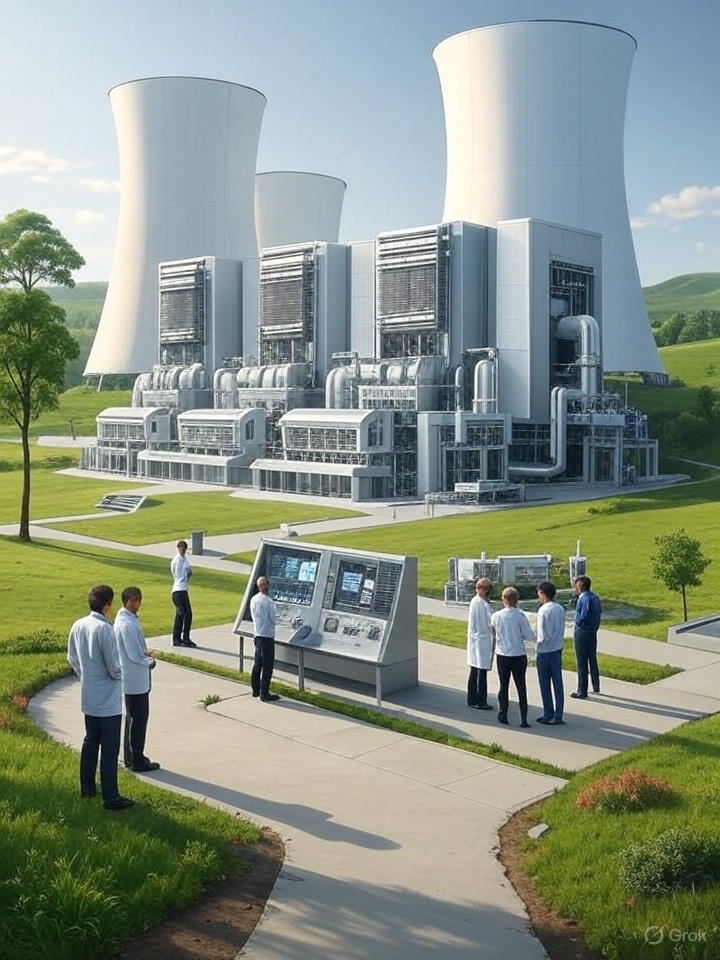 Capital and Operating Expenditures
Capital and Operating Expenditures
- CapEx: $1,800-3,000/kWe, or $1.8-3 billion per GW (optimized via AI-driven efficiencies). For 50 GW, total ~$90-150 billion, within budget through tokenized funding rounds.
- OpEx: ~$10-15 million/GW/year, lowered by AI predictive analytics and blockchain-automated transactions. LCOE: $40-60/MWh, competitive with baseload alternatives, enhanced by token rewards.
Economic Benefits
- Job Creation: 90,000+ jobs in drilling, AI engineering, blockchain development, and operations.
- Energy Independence: Utilizes ubiquitous underground heat, ensuring unlimited supply without imports.
- Grid Savings: Firm power could save $250-450 billion in system costs by 2050 through AI-optimized integration.
- Economic Growth: Powers AI-driven GDP growth, with tokenized assets enabling investor participation and CO2 grants adding revenue streams.
Environmental Benefits
- Low Emissions: Near-zero CO2, supporting net-zero goals; blockchain tracks offsets for CO2 grants and credits.
- Minimal Footprint: Small surface area; AI minimizes induced seismicity risks through real-time monitoring.
- Sustainability: Infinite resource base, with tokenized CO2 credits incentivizing green adoption.
ROI Analysis, 20-Year Chart, and Payback Time
Using conservative estimates (50 GW, $65/MWh including token/CO2 revenues, 95% capacity factor, 40% incentives), the optimized model projects:
- Payback Period: 5 years.
- Total 20-Year Net Profit: $278.92 billion.
- Average Annual ROI: 13.2% (enhanced via AI efficiencies, blockchain CO2 monetization, and token liquidity).
| Year | Capacity (GW) | Revenue ($B) | OpEx ($B) | CapEx ($B) | Incentives ($B) | Net Cash Flow ($B) | Cumulative CF ($B) |
|---|---|---|---|---|---|---|---|
| 1 | 0 | 0.00 | 0.0 | 20 | 8.0 | -12.00 | -12.00 |
| 2 | 0 | 0.00 | 0.0 | 20 | 8.0 | -12.00 | -24.00 |
| 3 | 10 | 5.69 | 0.12 | 20 | 8.0 | -6.43 | -30.43 |
| 4 | 20 | 11.38 | 0.24 | 20 | 8.0 | -0.86 | -31.29 |
| 5 | 30 | 17.07 | 0.36 | 20 | 8.0 | 4.71 | -26.58 |
| 6 | 40 | 22.76 | 0.48 | 0 | 0.0 | 22.28 | -4.30 |
| 7 | 50 | 28.45 | 0.60 | 0 | 0.0 | 27.85 | 23.55 |
| 8 | 50 | 28.45 | 0.60 | 0 | 0.0 | 27.85 | 51.40 |
| 9 | 50 | 28.45 | 0.60 | 0 | 0.0 | 27.85 | 79.25 |
| 10 | 50 | 28.45 | 0.60 | 0 | 0.0 | 27.85 | 107.10 |
| 11 | 50 | 28.45 | 0.60 | 0 | 0.0 | 27.85 | 134.95 |
| 12 | 50 | 28.45 | 0.60 | 0 | 0.0 | 27.85 | 162.80 |
| 13 | 50 | 28.45 | 0.60 | 0 | 0.0 | 27.85 | 190.65 |
| 14 | 50 | 28.45 | 0.60 | 0 | 0.0 | 27.85 | 218.50 |
| 15 | 50 | 28.45 | 0.60 | 0 | 0.0 | 27.85 | 246.35 |
| 16 | 50 | 28.45 | 0.60 | 0 | 0.0 | 27.85 | 274.20 |
| 17 | 50 | 28.45 | 0.60 | 0 | 0.0 | 27.85 | 302.05 |
| 18 | 50 | 28.45 | 0.60 | 0 | 0.0 | 27.85 | 329.90 |
| 19 | 50 | 28.45 | 0.60 | 0 | 0.0 | 27.85 | 357.75 |
| 20 | 50 | 28.45 | 0.60 | 0 | 0.0 | 27.85 | 385.60 |
Global Competitive Edge
This investment positions the U.S. to lead in geothermal innovation, countering global advancements in heat-based energy. EGS, enhanced by AI, blockchain, and tokens, enables a multi-billion-dollar export market by 2032, securing AI dominance as data center demand surges, while avoiding geopolitical sensitivities.
Comparison to Other Baseload Technologies
EGS provides firm power with advantages in resource ubiquity and minimal complexities, outperforming intermittency-prone renewables in reliability and surpassing fuel-dependent options in sustainability, ideal for AI needs without long-term burdens.
Conclusion
This $100 billion investment will fuel U.S. AI growth, enhance grid resilience, and deliver a 13.2% ROI with a 5-year payback. Recommend initiating Phase 1 R&D in 2025 to capitalize on incentives and secure a sustainable future.
